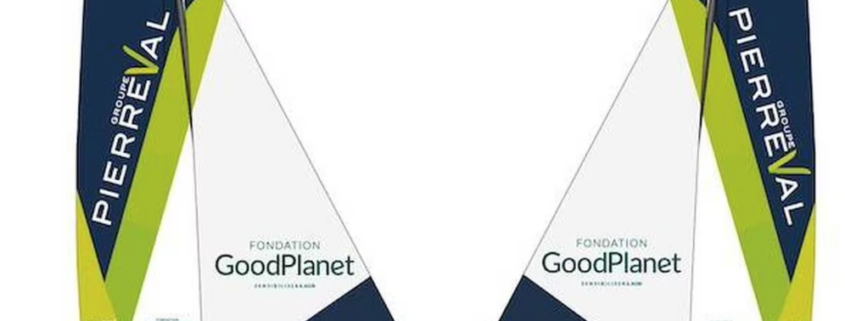A single rudder, a flap on the keel: Vincent Riou’s new Pogo is an “assertive architectural choice”.
After a few seasons accompanying skippers such as Thibaut Vauchel-Camus in Ocean Fifty and Aurélien Ducroz in Class40, the experienced Vincent Riou is back at the helm of his own project. Launched on February 19, his new Class40 is ambitious: a single rudder and a flap on the keel. Ahead of his return to competition on The Transat CIC, which departs on April 28, Vincent Riou explains the choices he has made on this new boat.
Voiles et Voiliers: Let’s talk about your new boat, which was launched on February 19. It’s a Pogo from the Structures yard, but a little different?
Vincent Riou: It’s a Structures boat, but a little different. I’d say that Structures sold me a decked and structured hull. I was in charge of fitting out the boat and then making the rather special parts that are the boat’s appendages. Because the boat is unusual in that, instead of having two rudders and a fixed keel, it has a single rudder and a keel with a trimmer, with a flap. So it’s a conscious architectural choice that I made, and that the Verdier firm studied for me. Apart from that, it’s a Pogo, so I didn’t make any major modifications, I just wanted to try out this concept.
With only one rudder, we have less handling.
Voiles et Voiliers: What do you think it will do for the boat?
Vincent Riou: Well, we know that with a flap keel, we can perform better than with a fixed keel. So that’s a certainty. Now, with a single rudder, we have less handling, so it’s going to be a little more touchy boat to steer. But to what extent? We don’t really know yet, because it’s difficult to simulate boat handling, even with today’s digital tools. The first trials are fairly conclusive, but we’re quite happy. After that, each time it’s a question of architectural compromises. You win on one side, you lose on the other. So we know that going upwind, going downwind, it’s going to be a pretty high-performance boat, but reaching is going to be a little more complicated, because when you’ve got a lot of heel with only one rudder, it’s harder to steer. We’re going to need a little time to fine-tune it, and a little time to compare it with the others and draw conclusions. I’m confident that the concept will work now, and that it will be more typical than other boats.
Voiles et Voiliers: Is this keel flap authorized by the rules?
Vincent Riou: The rules allow three appendages. And as soon as you put a flap on the keel, a trimmer, because in addition, it’s explicit in the rules that the fact that a trimmer, an interceptor, well certain devices like that which allow boats to be improved and hulls to be improved, corresponds to an appendage. So I opted for a rudder, a trimmer and a keel.
Voiles et Voiliers: So, if you’d had the choice, you would have fitted two rudders?
Vincent Riou: I would have used two rudders. But the challenge was to design a rudder system and a rudder geometry that wouldn’t handicap the boat too much.
I take the risk of going a little too early.
Voiles et Voiliers: So, in less than two months, you’ll be setting off on your first race: The Transat CIC. It’s a committed race in the North Atlantic…
Vincent Riou: The Transat CIC is a committed transatlantic race that’s a bit early in the program, to put it mildly. Now, in sailing, you don’t always choose your timing. The timing was like that, there was the choice of doing it or not doing it, because even the NIJI40 (transatlantic race between Belle-Ile-en-Mer and Marie-Galante) was too early for me. I’m taking the risk of going a bit too early, and I’m trying to make sure that we at least reach our goal of arriving and finishing the race, and I’m putting all my experience into achieving that.
Voiles et Voiliers: The Class40s may suffer a little on this type of course. We’ve seen that some of the new Class40s don’t really like hitting the waves upwind…
Vincent Riou: Yeah, I tried to anticipate that in the design of the boat. I thought about the program. I think it’s the strongest of all the Pogo S4s, because we’ve already used all the experience of the previous models, so we decided to partition the bow a little more. We’ve put back two series, and added a lot of things to the others as we went along. So, normally, it should be a solid boat. Now, we know that doesn’t exist, so have we gone far enough? We’ll have the answer in a few weeks.


